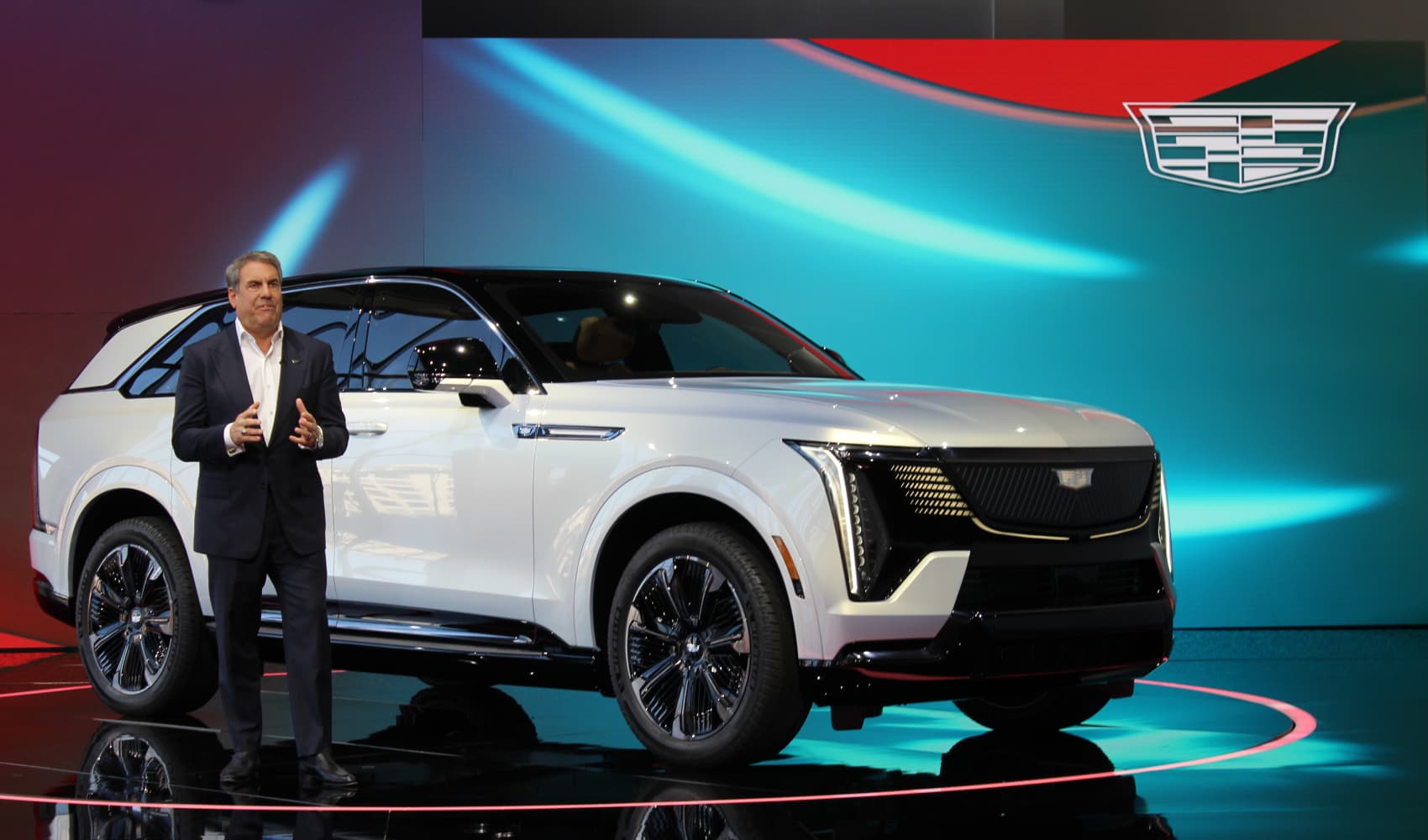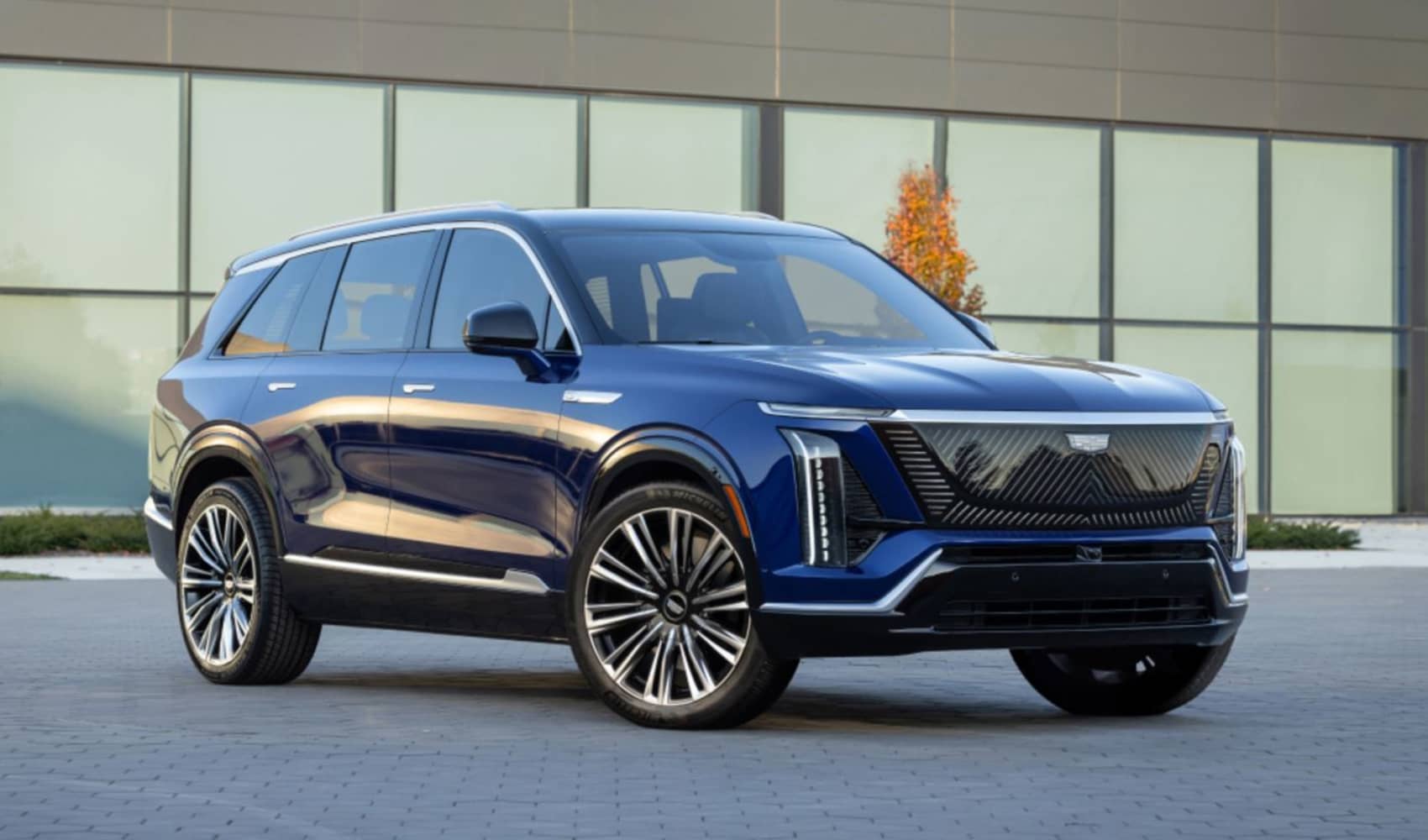GM's $5B Tariff Hit: What it Means for Car Prices!
GM Hit by Tariff Tidal Wave: $5 Billion Earnings Dip Expected
Introduction: Trouble on the Horizon for the Auto Giant?
General Motors, one of the giants of the automotive industry, is facing a potential storm. We all know that businesses, even massive ones like GM, aren't immune to the shifting tides of the global economy. This time, the culprit seems to be potential auto tariffs, and the forecast isn't looking pretty. Get ready for a deep dive into how these tariffs could impact GM's bottom line.
GM's Revised Forecast: What's Changed?
On Thursday, GM dropped a bit of a bombshell. They revised their 2025 earnings guidance, citing a possible $4 billion to $5 billion hit due to potential auto tariffs levied by President Donald Trump. That's a significant chunk of change, isn't it? Think of it like this: it's like planning a huge party, only to discover the catering bill is way more expensive than you budgeted for. Ouch!
The Numbers Don't Lie: A Closer Look at the Adjusted EBIT
What exactly does this revision mean in cold, hard numbers? GM now expects adjusted earnings before interest and taxes (EBIT) to land between $10 billion and $12.5 billion. That's a considerable drop from their previous estimate of $13.7 billion to $15.7 billion. It's not exactly doomsday, but it's certainly a signal that things are getting tougher.
Trump's Tariffs: A Wrench in the Works
So, what's causing this financial forecast to take a nosedive? The specter of tariffs, specifically those associated with President Donald Trump's trade policies. Tariffs, in essence, are taxes on imported goods. These taxes can significantly increase the cost of manufacturing, especially for a global behemoth like GM, which relies on international supply chains. It's like adding an extra layer of complexity to an already complex machine, and it's impacting GM's projected earnings.
First Quarter Success: A Brief Ray of Sunshine
Interestingly, this news comes hot on the heels of a positive first quarter for GM. The automaker reported first-quarter results that actually exceeded Wall Street's expectations. Think of it as a brief moment of sunshine before the storm clouds gathered. This strong performance makes the potential tariff impact even more jarring, doesn't it?
Understanding Adjusted EBIT: The Key Metric
Adjusted EBIT, or Earnings Before Interest and Taxes, is a crucial metric for assessing a company's profitability. It essentially shows how much profit a company makes from its core operations before accounting for interest expenses and taxes. For investors, it's a quick way to understand the financial health of the business.
The Impact on Consumers: Will Car Prices Rise?
One of the big questions on everyone's mind is: how will this affect consumers? Will the cost of GM vehicles increase? It's a distinct possibility. Companies often pass increased costs onto consumers to maintain their profit margins. So, we may see a slight uptick in the price of new GM cars and trucks. Only time will tell.
GM's Strategy: How Will They Navigate the Tariff Threat?
So, what's GM's plan? How will they navigate this potentially turbulent period? We can expect GM to explore several options, including:
- Negotiating with suppliers to reduce costs.
- Streamlining operations to improve efficiency.
- Exploring alternative sourcing options.
- Working with government officials to advocate for more favorable trade policies.
The Broader Implications: What Does This Mean for the Auto Industry?
GM's situation isn't unique. The entire auto industry is vulnerable to the effects of tariffs. If these tariffs become widespread, we could see significant disruptions in the global automotive supply chain and potentially higher prices for consumers across the board.
The Ripple Effect: Beyond Just Cars
Remember, the auto industry is a major employer and a significant contributor to the economy. Any disruption to the industry can have a ripple effect, impacting related sectors such as steel, aluminum, and logistics. So, this isn't just about car prices; it's about the health of the broader economy.
Comparing GM to Competitors: Are Others Feeling the Pinch?
It's essential to look at how GM's competitors are faring. Are they facing similar tariff-related headwinds? This comparison can help us understand whether GM's situation is unique or indicative of a broader industry trend. We'll need to monitor the earnings reports of other major automakers to get a clearer picture.
The Role of Trade Agreements: A Path to Stability?
Trade agreements, such as the USMCA (United States-Mexico-Canada Agreement), play a crucial role in shaping the global automotive landscape. These agreements can help reduce trade barriers and create more stable and predictable conditions for manufacturers. The ongoing renegotiation of trade agreements could have a significant impact on the industry's future.
Beyond Tariffs: Other Challenges Facing GM
While tariffs are a major concern, GM faces other challenges as well. These include:
- The ongoing transition to electric vehicles (EVs).
- The increasing competition from new entrants in the EV market.
- The need to invest in autonomous driving technology.
- Navigating global supply chain disruptions.
The EV Revolution: A Costly Transition
The transition to EVs is a massive undertaking, requiring significant investments in research, development, and manufacturing. GM is committed to an all-electric future, but this transition will be costly and complex. The company needs to balance its investments in EVs with the challenges posed by tariffs and other economic headwinds.
The Stock Market Reaction: How Investors Are Responding
How have investors reacted to GM's revised guidance? The stock market is often a good indicator of sentiment. A sharp drop in GM's stock price could signal investor concern about the potential impact of tariffs. Monitoring the stock market reaction can provide valuable insights into the market's perception of the company's prospects.
Looking Ahead: The Future of GM in a Tariff-Heavy World
What does the future hold for GM? While the tariff situation presents a significant challenge, the company is a resilient and adaptable organization. By focusing on innovation, efficiency, and strategic partnerships, GM can weather the storm and emerge stronger in the long run. Only time will tell how well they navigate these challenges.
Conclusion: Key Takeaways on GM's Tariff Troubles
In conclusion, GM is facing a potential $4 billion to $5 billion hit to its 2025 earnings due to potential auto tariffs. This news comes despite a strong first quarter. The impact on consumers could mean higher car prices. GM is likely to explore various strategies to mitigate the impact, and the situation highlights the broader challenges facing the auto industry in a world of increasing trade tensions. Investors will be closely watching how GM navigates these turbulent times. The future of the company, and the broader automotive landscape, hinges on how these issues are resolved.
Frequently Asked Questions (FAQs)
1. What are auto tariffs, and how do they affect GM?
Auto tariffs are taxes imposed on imported vehicles and auto parts. For GM, this increases the cost of production since they rely on global supply chains, leading to potentially lower profits.
2. Will GM car prices increase because of these tariffs?
It's possible. GM may pass on some of the increased costs from tariffs to consumers, which could result in higher prices for their vehicles.
3. How is GM planning to deal with the potential tariff impact?
GM will likely explore several strategies, including negotiating with suppliers, streamlining operations, and advocating for favorable trade policies.
4. Are other automakers experiencing similar challenges?
Yes, many other automakers are also vulnerable to the effects of tariffs, as the automotive industry relies heavily on global supply chains.
5. Where can I find more up-to-date information on this situation?
Stay updated through reliable news sources like CNBC, The Wall Street Journal, Reuters, and automotive industry publications. Also monitor GM's investor relations website for official updates.


